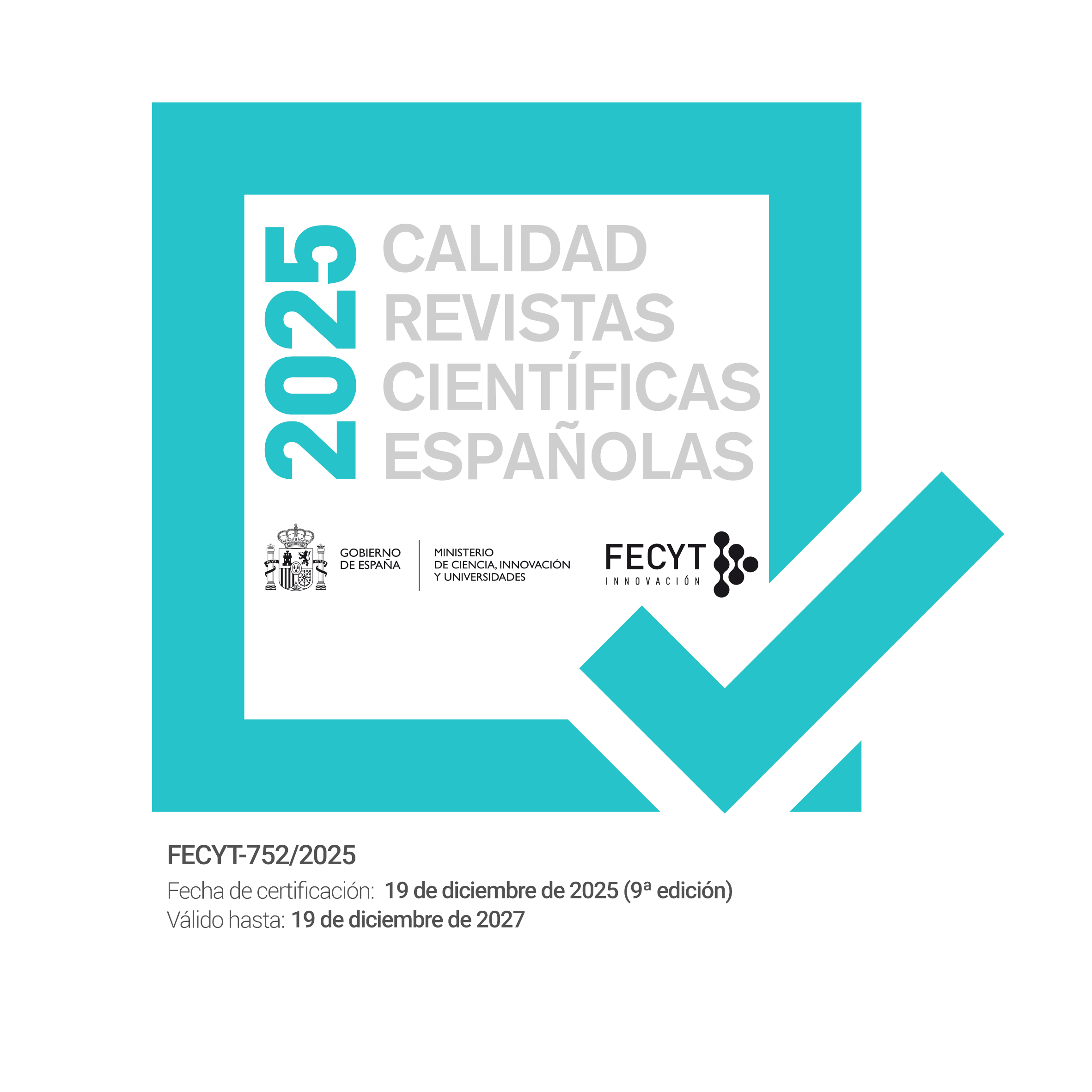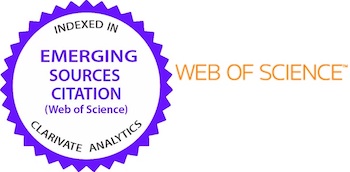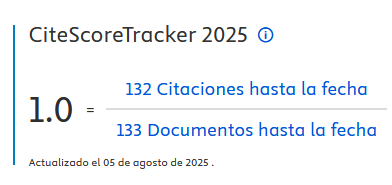Obesity and Eating Disorders: An Analysis from the Executive Function
DOI:
https://doi.org/10.33898/rdp.v30i112.291Keywords:
Obesity, Eating Disorder, Executive Function, Decision Making, Cognitive FlexibilityAbstract
Obesity is a highly prevalent chronic disease. Some authors have suggested that obesity shares certain characteristics with eating disorders, and they have gone even futher by proposing that it should be considered as a disorder of eating behavior and food intake. This approach is not new, for example, Guidano and Liotti, influenced by Bruch's vision, stated that obesity was part of the eating disorders proposed in its structural cognitive model. Vision that Vittorio Guidano maintained later in the Organization of Personal Meaning of Eating Disorders. From the area of executive functions some research has supported this hypothesis of continuity between eating disorders and obesity. This is because people with obesity and people with eating disorders would have similar deficits in some executive functions, such as the ability to make decisions and cognitive flexibility. It has been suggested that these executive functions are related to maladaptive eating behaviors. This review seeks to analyze the results of the research of the last decade in the area of executive functions in people with obesity and eating disorders to provide an up-to-date overview of the state of the art in the matter and contribute to elucidate the hypothesis of continuity between eating disorders and obesity.Downloads
References
American Psychiatric Association. (2013). Diagnostic and statistical manual of mental disorders (5th Ed.). Washington, DC: APA.
Bechara, A., Damasio, H., Tranel, D. y Damasio, A. R. (2005). The Iowa Gambling Task and the somatic marker hypothesis: some questions and answers. Trends in Cognitive Sciences, 9(4), 159–162. https://doi.org/10.1016/j.tics.2005.02.002.
Blume, M., Schmidt, R. y Hilbert, A. (2019). Executive Functioning in Obesity, Food Addiction, and Binge-Eating Disorder. Nutrients, 11, 54. https://doi.org/10.3390/nu11010054.
Bray, G. A., Kim, K. K. y Wilding, J. P. H. (2017). Obesity: a chronic relapsing progressive disease process. A position statement of the World Obesity Federation. Obesity Reviews, 18, 715–723.
Brockmeyer, T., Hahn C., Reetz, C., Schmidt, U. y Friederich, H. C. (2015). Approach bias and cue reactivity towards food in people with high versus low levels of food craving. Appetite, 95, 197–202. https://doi.org/10.1016/j.appet.2015.07.013
Brogan, A., Hevey, D. y Pignatti, R. (2010). Anorexia, bulimia, and obesity: Shared decision making deficits on the Iowa Gambling Task (IGT). Journal of the International Neuropsychological Society, 16(4), 711-715. https://doi.org/10.1017/S1355617710000354
Bruch, H. (1973). Eating Disorders: Obesity, Anorexia Nervosa and the Person Within. Nueva York, NY: Basic Books.
Bruner, J. (1991). Actos de significado: Maìs allaì de la revolucioìn cognitiva. Madrid, España: Alianza Editorial.
Ciscar, S., Perpiña, C., Blasco, L. y Segura, M. (2019). Funcionamiento Ejecutivo, Afecto y Autorregulacioìn Alimentaria en los Trastornos Alimentarios y la Obesidad. Revista Argentina de Cliìnica Psicoloìgica, 28(1), 1-11. https://doi.org/10.24205/03276716.2018.1083
Cordella, M. P. (2008). ¿Incluir la Obesidad en el Manual de Enfermedades Mentales (DSM-IV)?. Revista Chilena de Nutrición, 35(3), 181-187. https://doi.org/10.4067/S0717-75182008000300003
Coìrdova, M. E., Schiavon, C. C., Busnello, F. M. y Reppold, C. T. (2017). Nutritional and neuropsychological profile of the executive functions on binge eating disorder in obese adults. Nutr Hosp, 34, 1448-1454.
Da Luz, F. Q., Sainsbury, A., Mannan, H., Touyz, S., Mitchison, D. y Hay, P. (2017). Prevalence of obesity and comorbid eating disorder behaviors in south australia from 1995 to 2015. Int. J. Obes, 41, 1148–1153. https://doi.org/10.1038/ijo.2017.79
Danner, U. N., Ouwehand, C., van Haastert, N. L., Hornsveld, H. y de Ridder, D. (2012). Decision making Impairments in Women with Binge Eating Disorder in Comparison with Obese and Normal Weight Women.Eur. Eat. Disorders Rev, 20(1), 56–62.
Davies, H., Fox, J., Naumann, U., Treasure, J., Schmidt, U. y Tchanturia, K. (2012). Cognitive remediation and emotion skills training (CREST) for anorexia nervosa: An observation- al study using neuropsychological outcomes. European Eat- ing Disorders Review, 20(3), 211-217. https://doi.org/10.1002/erv.2170.
Donnelly, B., Touyz, S., Hay, P., Burton, A., Russel, J. y Caterson I. (2018). Neuroimaging in bulimia nervosa and binge eating disorder: a systematic review. J Eat Disorder, 6(3). https://doi.org/10.1186/s20337-018-0187-1.
Eneva, K., Arlt, J., Phil, M., Yiu, A., Murray, S. y Chen, E. (2017). Assessment of executive functioning in Bingeeating Disorder independent of weight status. Int J Eat Disord, 50(8), 942–951. https://doi.org/10.1002/eat.22738.
Fagundo, A., de la Torre, R., Jiménez-Murcia, S., Agüera, Z., Granero, R., Tárrega, S., … Fernández-Aranda, F. (2012). Executive Functions Profile in Extreme Eating/Weight Conditions: From Anorexia Nervosa to Obesity. PLoS ONE, 7(8): e43382. https://doi.org/10.1371/journal.pone.0043382
Fairburn, C. G., Cooper, Z., Doll, H. A., Norman, P. y O’Connor, M. (2000). The natural course of bulimia nervosa and binge eating disorder in young women. Archives of General Psychiatry, 57(7), 659-65.
Fandiño, J., Moreira, R. O., Preissler, C., Gaya, C. W., Papelbaum, M., Countinh, W. F. y Appolinario, J. C. (2010).
Impact of binge eating disorder in the psychopathological profile of obese women. Comparative Psychiatric, 51(2), 110- 114.
Fernández, F. y Turón, V. (1998). Trastornos de la alimentación. Barcelona, España: Masson.
Friederich, H., Wu, M., Simon, J. J. y Herzog, W. (2013). La función del neurocircuito en los trastornos de la alimentación. J. Comer. Disord, 46, 425-432. https://doi.org/10.1002/eat.22099
Garrow, J. (1988). Obesity and related diseases. Edinburgh, Reino Unido: Churchill Livingstone
Giel, K. E., Teufel, M., Junne, F., Zipfel, S. y Schag, K. (2017). Impulsividad relacionada con los alimentos en la obesidad y el trastorno por atracón: una actualización sistemática de la evidencia. Nutrients, 9(11), 1170. https://doi.org/10.3390/nu9111170
Gilbert, S. J. y Burgess, P. W. (2008). Executive function. Current Biology, 18(3), 110-114.
Gluck, M. E., Viswanath, P. y Stinson, E. J. (2017). Obesity, appetite and the prefrontal cortext. Curr Obes Rep, 6(4), 380-388. https://doi.org/10.1007/s13679-017-0289-0.
Goldschmidt, A. B., Passi Aspen, V. A., Sinton, M. M., Tanofsky-Kraff, M. y Wilfley, D. E. (2008). Disordered eating attitudes and behaviors in overweight youth. Obesity Research, 16, 257–264
Guidano, V. F. (1991). The self in process. Toward a Post-rationalist cognitive therapy. Nueva York, NY, Guilford (traducción castellana): El sí mismo en proceso. Hacia una terapia posracionalista. Buenos Aires, Argentina: Paidós, 1994.
Guidano, V. y Liotti, G. (1983). Cognitive Processes and Emotional Disorders. Nueva York, NY: Guilford Press. (Hay traducción castellana: Procesos Cognitivos y Desórdenes Emocionales. Santiago: Cuatro Vientos, 2006).
Gutiérrez-Fisac, J. L., Regidor, E., Banegas, J. R. y Rodríguez, F. (2005). Prevalencia de obesidad en la población adulta española: 14 años de incremento continuado. Med Clin (Barc), 124(5), 196-197.
Hall, K. D. y Gou, J. (2017). Obesity energetics: body weight regulation and the effects of diet composition. Gastroenterology, 152(7), 1718–1727.
Hudson J. I., Hiripi E., Pope H. G. y Kessler, R. C. (2007). The prevalence and correlates of eating disorders in the NCS Replication. Biological Psychiatry, 61, 348–358.
Hsu, L. K. G., Mulliken, B., McDonagh, B., Krupa, S., Rand, W., Fairburn, C. G., Rolls, B., McCrory, M. A., Saltzman, E., Shikora, S., Dwyer, J. y Roberts, S. (2002). Binge eating disorder in extreme obesity. International Journal of Obesity, 26(10), 1398-1403.
Kahan, S. y Zvenyach, T. (2016). Obesity as a Disease: Current Policies and implications for the future. Curr Obes Rep, 5(2), 291-297.
Kessler, R. C., Berglund, P. A., Chiu, W. T., Deitz, A. C., Hudson, J. I., Shahly, V., … y Xavier, M. (2013). The prevalence and correlates of binge eating disorder in the World Health Organization World Mental Health Surveys. Biological Psychiatry, 73(9), 904–914.
Kumanyika, S. K. (2008). Environmental influences on childhood obesity: ethnic and cultural influences in context. Physiology & Behavior, 94(1), 61-70.
Lavagnino, L., Arnone, D., Cao, B., Soares, J. C. y Selvaraj, S. (2016). Inhibitory control in obesity and binge eating disorder: A systematic review and meta-analysis of neurocognitive and neuroimaging studies. Neurosci Biobehav Rev, 68, 714–726. https://doi.org/10.1016/j.neubiorev.2016.06.041
Lecube, A., Monoreo, S., Rubio, M. A., Martiìnez-de-Icaya, P., Martiì, A., Salvador, J.,... y Casanueva, F. (2016). Prevention, diagnosis, and treatment of obesity. 2016 position statement of Spanish Society for the Study of Obesity. Endocrinología, Diabetes y Nutrición, 64(1), 15-22.
Lezak, M. D. (2004). Neuropsychological assessment. New York: Oxford University Press.
Manasse, S. M., Goldstein, S. P., Wyckoff, E., Forman, E. M., Juarascio, A. S., Butryn, M. L., Ruocco, A. C. y Nederkoorn, C. (2016). Slowing down and taking a second look: Inhibitory deficits associated with binge eating are not food-specific. Appetite, 96, 555–559. https://doi.org/10.1016/j.appet.2015.10.025
Miyake, A, Friedman, N. P, Emerson, M. J, Witzki, A. H., Howerter, A. y Wager, T. D. (2000). The unity and diversity of executive functions and their contributions to complex “frontal lobe” tasks: a latent variable analysis. Cognitive Psychology, 41(1), 49–100. https://doi.org/10.1006/cogp.1999.0734
Neumark-Sztainer, D., Wall, M., Eisenberg, M. E., Story, M. y Hannan, P. J. (2006). Overweight status and weight control be- haviors in adolescents: Longitudinal and secular trends from 1999-2004. Preventive Medicine, 43(1), 52-9. https://doi.org/10.1016/j.ypmed.2006.03.014
Neumark-Sztainer, D., Wall, M., Haines, J., Story, M., Sherwood, N. y Van den Berg, P. (2007). Shared risk and protective fac- tors for overweight and disordered eating in adolescents. American Journal of Preventive Medicine, 33(5), 359-369. https://doi.org/10.1016/j.amepre.2007.07.031
Noël, X., Brevers, D y Bechara, A. (2013). A neurocognitive approach to understanding the neurobiology of addiction. Current Opinion in Neurobiology 23(4), 632–638. https://doi.org/10.1016%2Fj.conb.2013.01.018
Organizacioìn Mundial de la Salud, Centro de Prensa (OMS, 2015). Obesidad y sobrepeso (Nota Descriptiva N°311).
Organizacioìn Mundial de la Salud (OMS, 2018). Obesidad y sobrepeso. Datos y cifras. Recuperado de: https://www.who.int/es/news-room/fact-sheets/detail/obesity-and-overweight
Pannacciulli, N., del Parigi, A., Chen, K., Le, D. S. N. T., Reiman, E. M. y Tataranni, P. A. (2006). Anomalías cerebrales en la obesidad humana: un estudio morfométrico basado en voxel. Neuroimagen, 31(4), 1419-1425.
Pearson, C. M., Wonderlich, S. A. y Smith, G. T. (2015). A risk and maintenance model for bulimia nervosa: From impulsive action to compulsive behavior. Psychol Rev, 122 (3), 516-535. https://doi.org/10.1037/a0039268
Perpiña, C., Segura, M. y Sánchez-Reales, S. (2017). Cognitive flexibility and decision-making in eating disorders and obesity. Eat Weight Disord, 22(3), 435-444. https://doi.org/10.1007/s40519-016-0331-3
Qi, L. y Cho, Y. A. (2008). Gene–environment interaction and obesity. Nutr Rev, 66(12), 684–694. https://doi.org/10.1111/j.1753-4887.2008.00128.x
Spitzer, R. L., Devlin, M., Walsh, B. T., Hasin, D., Wing, R., Marcus, M.,… y Nonas, C. (1992). Binge eating disorder: A miltisite field trial of the diagnostic criterio. Int J Eat Disord, 11(3), 191 - 203. https://doi.org/10.1002/1098-108X(199204)11:3%3C191::AID-EAT2260110302%3E3.0.CO;2-S
Raman, J., Hay, P. y Smith, E. A. (2014). Manualised Cognitive Remediation Therapy for adult obesity: study protocol for a randomised controlled trial. Trials, 15(1), 426. https://doi.org/10.1186/1745-6215-15-426
Raman, J., Hay, P., Tchanturia, K. y Smith, E. A. (2018). Randomised controlled trial of manualized cognitive remediation therapy in adult obesity. Appetite, 123, 269-279. https://doi.org/10.1016/j.appet.2017.12.023
Reinert, K. R., Po’e, E. K. y Barkin, S. L. (2013). The relationship between executive function and obesity in children and adolescents: a systematic literature review. Journal of obesity, 2013. Recuperado de: http://downloads.hindawi.com/journals/jobes/2013/820956.pdf
Roberto, C., Swinburn, B., Hawkes, C., Huan, T., Costa, S., Ashe, M.,... y Brownell, K. (2015). Patchy progress on Obesity Prevention: emerging examples, entrenched barriers, and new thinking. Lancet, 385(9985), 2400– 2409. https://doi.org/10.1016/S0140-6736(14)61744-X.
Rosenblum, J. y Venkatesh, R. D. (2017) Obesity. En M. Goldstein (Ed.), The MassGeneral Hospital for Children Adolescent Medicine Handbook. Cham, Alemania: Springer.
Rudolph, A., Hellbardt, M., Baldofski, S., de Zwaan, M. y Hilbert, A. (2016). Evaluation des einjährigen multimodalen Therapieprogramms DOC WEIGHT® 1.0 zur Gewichtsreduktion bei Patienten mit Adipositas Grad II und III. Psychother Psychosom Med Psychol, 66, 316–323.
Segura-Serralta, M., Perpiñá, C., Ciscar, S., Blasco, L., Espert, R., Romero-Escobar, C., Domínguez, J. R. y Oltra-Cucarella, J. (2019). Executive functions and emotion regulation in obesity and eating disorders. Nutr Hosp, 36(1), 167-172.
Segura, M., Roncero, M., Oltra-Cucarella, J., Blasco, L., Ciscar, S., Portillo, M.,… y Perpiñá, C. (2017). Entrenamiento en remediacioìn cognitiva y habilidades emocionales en formato grupal para pacientes con obesidad: Un estudio piloto. Revista de Psicopatologiìa y Psicologiìa Cliìnica, 22, 127-138. https://doi.org/10.5944/rppc.vol.22.num.2.2017.19115
Serra-Majem, L. y Bautista-Castaño, I. (2013). Etiology of obesity: two “key issues” and other emerging factors. Nutrición Hospitalaria, 28(5), 32-43.
Skunde, M., Walther, S., Simon, J., Wu, M., Bendszus, M., Herzog, W. y Friederich, H. C. (2016). Neural signature of behavioural inhibition in women with bulimia nervosa. J Psychiatry Neurosci, 41(5), 69-78. https://doi.org/10.1503%2Fjpn.150335
Sociedad Española para el Estudio de la Obesidad (SEEDO, 2000). Consenso 2000 para la evaluación del sobrepeso y la obesidad y el establecimiento de criterios de intervención terapéutica. Medicina Clínica (Barc), 115, 587-597.
Stojek, M., Shank, L. M., Vannucci A., Bongiorno, D. M., Nelson, E. E., Waters, A. J.,... y Tanofsky-Kraff, M. (2018). A systematic review of attentional biases in disorders involving binge Eating. Appetite, 123(1), 367- 389. https://doi.org/10.1016/j.appet.2018.01.019
Swinburn, B. A., Sacks, G., Hall, K. D., McPherson, K., Finegood, D. T., Moodie, M. L. y Gortmaker, S. L. (2011). The global obesity pandemic: shaped by global drivers and local environments. Lancet, 378(9793), 804-14.
Tchanturia, K., Lloyd, S. y Lang, K. (2013). Cognitive remediation therapy for anorexia nervosa: current evidence and future research directions. International Journal of Eating Disorders, 46(5), 492-496. https://doi.org/10.1002/eat.22106oi: 10.1002/eat.22235
Tchanturia, K. y Lock, J. (2011). Cognitive remediation therapy for eating disorders: Development, refinement and future di- rections. En R. Adan y W. Kaye (Eds.). Behavioral Neurobi- ology of Eating Disorder, 6, (pp. 269-287). Heidelberg, Aleman: Springer.
Turón, V. J. (1997). Trastornos de la alimentación. Anorexia nerviosa, bulimia y obesidad. Barcelona, España: Masson.
Ugarte, C., Quiñones, A., Bustos, C. y Vicente, B. (en prensa). Porcentaje de peso perdido y su recuperación en pacientes bariátricos: una análisis desde la perspectiva temporal. Revista Chilena de nutrición.
Ugarte, C., Quiñones, A. y Vicente, B. (en prensa). Re-ganancia del porcentaje de peso perdido en pacientes bariátricos: Una mirada psicológica. Revista Médica de Chile.
Ugazio, V., Negri, A. y Fellin, L. (2015). Freedom, Goodness, Power, and Belonging: The Semantics of Phobic, Obsessive-Compulsive, Eating, and Mood Disorders. Journal of Constructivist Psychology, 28, 293–315. https://doi.org/10.1080/10720537.2014.951109
Van den Eynde, F. y Treasure, J. (2009). Neuroimaging in eating disorders and obesity: implications for research. Child Adolesc Psychiatr Clin N Am 18(1), 95-115. https://doi.org/10.1016/j.chc.2008.07.016
Vinai, P., Da Ros, A., Speciale, M., Gentile, N., Tagliabue, A., Vinai, P.,... y Cardetti, C. (2015). Psychopathological characteristics of patients seeking for bariatric surgery, either affected or not by binge eating disorder following the criteria of the DSM IV TR and of the DSM 5. Eating Behaviors, 16, 1-4. https://doi.org/10.1016/j.eatbeh.2014.10.004
Villarejo, C., Fernandez-Aranda, F., Jimenez-Murcia, S., Penas-Lledo, E., Granero, R. y Penelo, E. (2012). Lifetime obesity in patients with eating disorders: Increasing prevalence, clinical and personality correlates. Eur Eat Disord Rev, 20(3), 250–254. https://doi.org/10.1002/erv.2166
Villarejo, C., Jimeìnez-Murcia, S., Aìlvarez-Moya, E., Granero, R., Penelo, E., Treasure, J.,… y Fernaìndez-Aranda, F. (2014). Loss of control over eating: a description of the eating disorder/obesity spectrum in women. Eur Eat Disord Rev, 22(1), 25–31. https://doi.org/10.1002/erv.2267
Vocks, S., Tuschen-Caffier, B., Pietrowsky, R., Rustenbach, S. J., Kersting, A. y Herpertz S. (2010). Meta-analysis of the effectiveness of psychological and pharmacological treatments for binge eating disorder. Int J Eat Disord, 43(3), 205-17. https://doi.org/10.1002/eat.20696
Williamson, D. F., Thompson, T. J., Anda, R. F., Dietz, W. H. y Felitti, V. (2002). Body weight and obesity in adults and self-reported abuse in childhood. Int J Obes Relat Metab Disord, 26(8), 1075-82.
Wolz I., Fagundo A. B., Treasure J. y Fernández-Aranda F. (2015). The processing of food stimuli in abnormal eating: a systematic review of electrophysiology. Eur Eat Disord Rev, 23(4), 251-61. https://doi.org/10.1002/erv.2366
Wu, M., Brockmeyer, T., Hartmann, M., Skunde, M., Herzog, W. y Friederich, H. C. (2016). Reward-related decision making in eating and weight disorders: A systematic review and meta-analysis of the evidence from neuropsychological studies. Neurosci Biobehav Rev, 61, 177–196. https://doi.org/10.1016/j.neubiorev.2015.11.017
Downloads
Published
How to Cite
Issue
Section
License
Authors who publish in this journal accept the following conditions:
-
Authors retain copyright and grant the journal the right of first publication, with the work registered under the Creative Commons CC-BY-NC 4.0 International license. This license allows third parties to cite the text and use it without alteration and for non-commercial purposes, provided they credit the authorship of the work and its first publication in this journal.
-
Authors may enter into other independent and additional contractual agreements for the non-exclusive distribution of the version of the article published in this journal (e.g., including it in an institutional repository or publishing it in a book), provided they clearly indicate that the work was first published in this journal.
-
The views expressed in the articles are solely the responsibility of the authors and in no case do they reflect the opinions or scientific policies of the journal.















